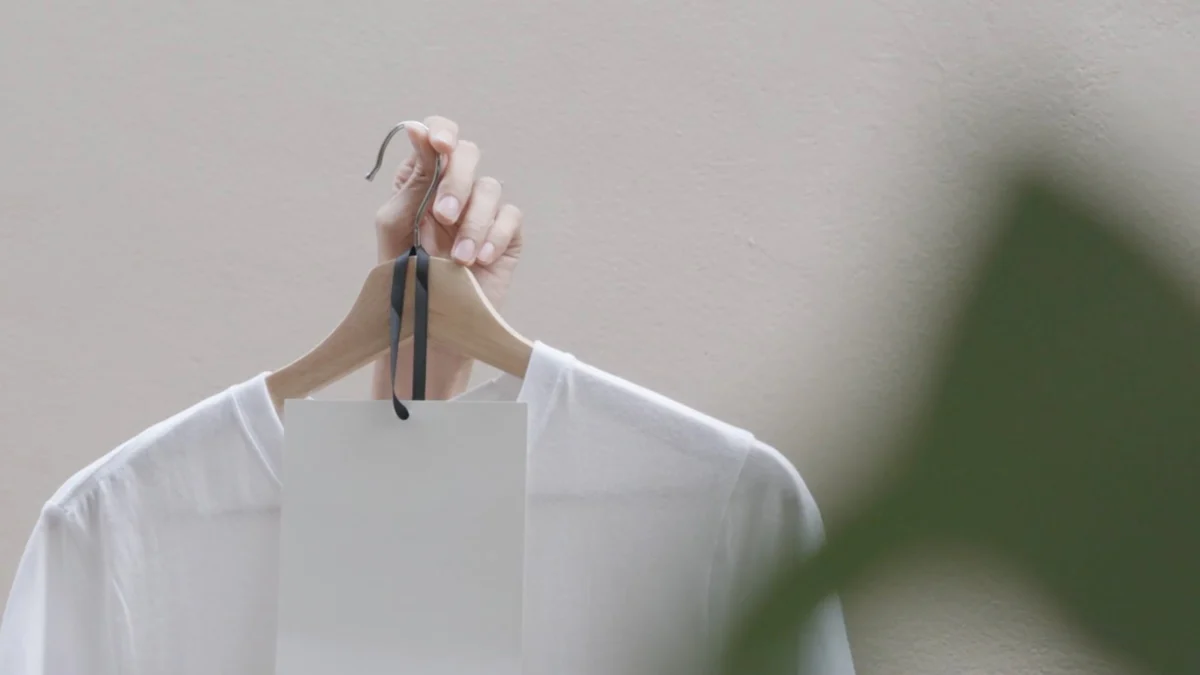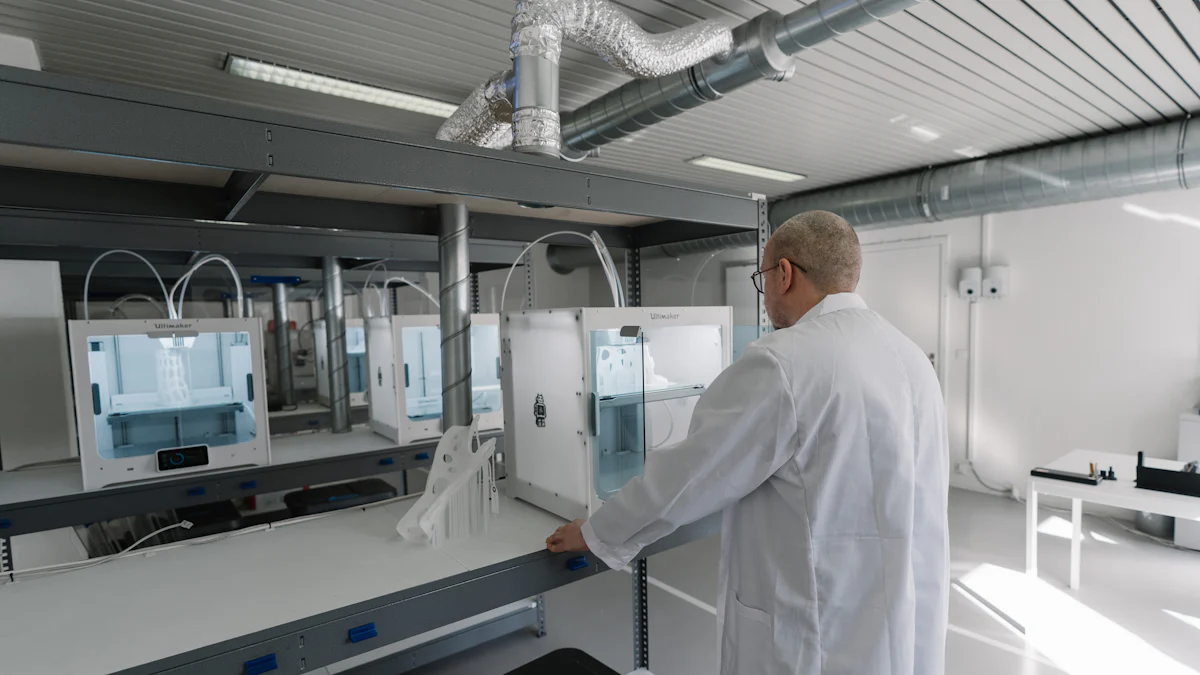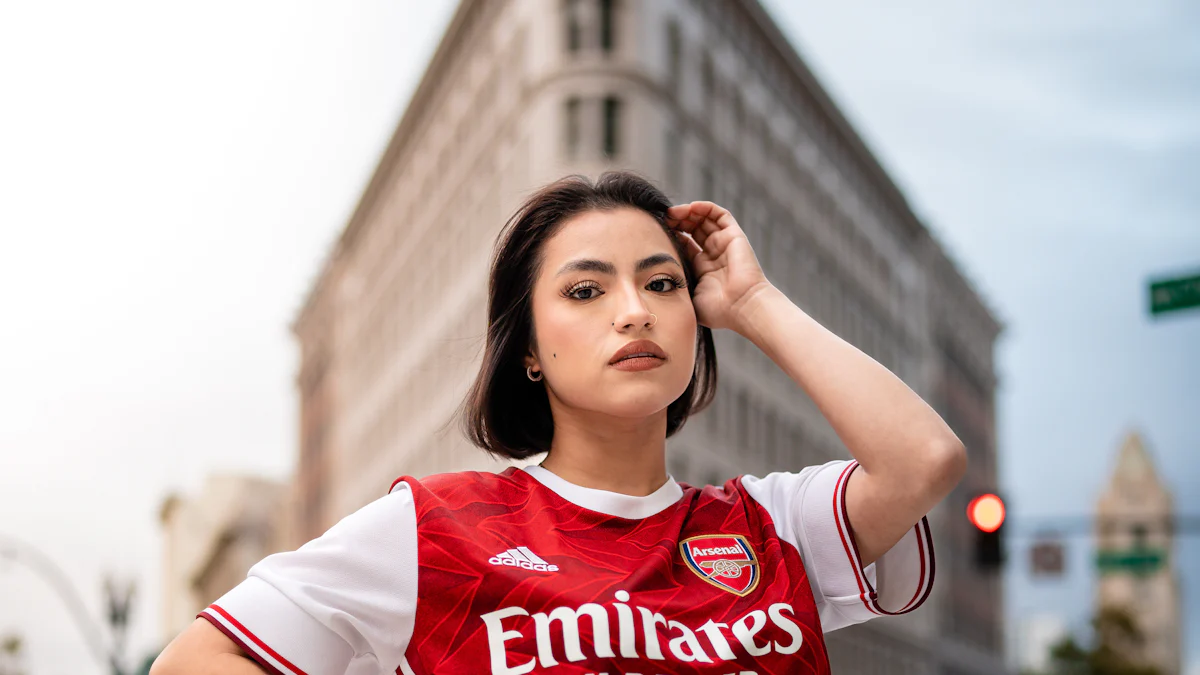
When it comes to sportswear, choosing the right printing method can make a significant difference in both appearance and performance. DTF printing stands out for its ability to handle intricate designs and vibrant colors while offering versatility across various fabrics like polyester and blends. This makes it ideal for small orders or personalized items. On the other hand, screen printing excels in durability and cost-effectiveness for bulk orders, especially for simple designs. Your decision should focus on factors like design complexity, fabric type, and the desired quality of the final product.
Key Takeaways
DTF printing is ideal for intricate designs and vibrant colors, making it perfect for custom team uniforms and small orders.
Screen printing excels in durability and cost-effectiveness for bulk orders, especially for simple designs, ensuring long-lasting prints.
Choose DTF printing for its versatility across various fabrics, including polyester and synthetic blends, without the need for pretreatment.
For heavy-use sportswear, screen printing is the better option due to its superior durability, which withstands frequent washing and intense activity.
Evaluate your order size and design complexity: DTF is cost-effective for small runs, while screen printing is more economical for large quantities.
Both methods have unique strengths; DTF is better for detailed, multicolor designs, while screen printing is suited for bold, simple graphics.
Understanding DTF Printing for Sportswear

How DTF Printing Works
DTF printing, short for direct-to-film, is a revolutionary printing method that has transformed garment decoration. The process begins by printing your design onto a special PET film using high-quality inks. Afterward, an adhesive powder is applied to the printed film. This powder ensures the design adheres securely to the fabric. Finally, the design is transferred onto the garment using a heat press, creating a durable and vibrant print.
This method allows for full color prints with exceptional detail and vibrancy. Unlike traditional techniques, DTF printing does not require pretreatment of fabrics, making it a more efficient option. It works seamlessly on a variety of materials, including cotton, polyester, and synthetic blends. This versatility makes it a preferred choice for sportswear, where different fabric types are often used.
Key Advantages of DTF Printing
Excellent Compatibility with Polyester and Synthetic Blends
One of the key advantages of DTF printing is its compatibility with modern fabrics like polyester and synthetic blends. These materials are commonly used in sportswear due to their lightweight and moisture-wicking properties. DTF printing ensures high-resolution prints on these fabrics without compromising their performance.
Vibrant Colors and Intricate Design Capabilities
DTF printing excels in producing vibrant colors and intricate designs. The technology supports high-definition prints, allowing you to create detailed logos, patterns, or graphics. This makes it ideal for sportswear that demands both aesthetic appeal and functionality. The color vibrancy achieved through this method ensures your designs stand out, even on dark or textured fabrics.
Suitable for Small to Medium-Sized Orders
For small or custom orders, DTF printing offers unmatched flexibility. Unlike screen printing, which requires extensive setup, DTF printing allows you to produce high-quality designs quickly and efficiently. This makes it a cost-effective solution for personalized sportswear, such as team uniforms or one-off designs.
Versatile Across Various Fabric Types
DTF printing is highly versatile, working well on a wide range of fabrics. Whether you’re printing on cotton, nylon, or polyester, this method delivers consistent quality. It also performs well on hard-to-print surfaces like leather or polyester-coated materials, expanding your options for garment decoration.
Limitations of DTF Printing
Slightly Less Durable for Heavy-Use Sportswear
While DTF printing offers good durability, it may not match the long-term resilience of screen printing for heavy-use sportswear. Over time, frequent washing and intense physical activity can cause slight fading or wear. For items like practice jerseys or gear subjected to rough use, this could be a consideration.
Higher Cost Per Unit for Large Orders
Another limitation lies in the cost structure. DTF printing is more economical for small to medium-sized orders but becomes less cost-effective for large-scale production. The per-unit cost increases with higher quantities, making it less suitable for bulk orders compared to screen printing.
Exploring Screen Printing for Sportswear

How Screen Printing Works
Screen printing, a widely used printing method, involves transferring ink onto fabric through a mesh screen. The process begins by creating a stencil, also known as a screen, which blocks out areas where ink should not pass. Each color in the design requires a separate stencil. Once the screens are ready, ink is pushed through the mesh using a squeegee, leaving the design imprinted on the garment. Afterward, the ink is cured, ensuring it bonds securely to the fabric.
This method is ideal for bold and simple designs with fewer colors. Traditional screen printing has been a go-to choice for decades due to its ability to produce vibrant and durable prints. While the setup process can be time-intensive, the results are consistent and long-lasting, making it a preferred option for bulk orders.
Key Advantages of Screen Printing
Superior Durability for Heavy-Use Items
One of the key advantages of screen printing is its unmatched durability. The ink penetrates deeply into the fabric, creating prints that withstand frequent washing and heavy use. This makes it an excellent choice for sportswear like jerseys and practice gear, which endure intense physical activity and regular laundering.
Cost-Effective for Bulk Orders
Screen printing becomes highly economical when producing large quantities. The initial setup costs, including creating stencils, are spread across the entire order, reducing the per-unit cost. For teams or organizations needing hundreds of identical garments, this method offers significant savings without compromising on quality.
Long-Standing Reliability for Team Apparel
Screen printing has a proven track record for team uniforms and promotional merchandise. Its ability to deliver bold, vibrant colors ensures logos and designs stand out. Whether you’re outfitting a sports team or creating branded apparel, this method guarantees consistent results across all items.
Limitations of Screen Printing
Limited Ability to Handle Intricate or Multicolor Designs
Despite its strengths, key disadvantages of screen printing include its struggle with complex designs. Each color requires a separate screen, making multicolor or intricate patterns labor-intensive and costly. Designs with gradients or fine details may not achieve the same precision as other methods like DTF printing.
Less Effective on Modern Polyester Blends
While modern screen printing works well on cotton and traditional fabrics, it can face challenges with modern polyester blends. These materials, common in sportswear, often require special inks or treatments to ensure proper adhesion. This limitation may affect the color vibrancy and durability of prints on performance fabrics.
Time-Intensive Setup for Small or Custom Orders
Another drawback lies in the setup process. Creating stencils and preparing screens takes time, making screen printing less practical for small or custom orders. For one-off designs or limited runs, the setup effort may outweigh the benefits, leading to higher costs and longer production times.
Comparing DTF Printing and Screen Printing
When deciding between DTF printing and screen printing, understanding how they compare in key areas like durability, cost, and design complexity can help you make the best choice for your sportswear needs.
Durability
Screen printing excels in long-term durability for heavy use
If you need sportswear that can endure frequent washing and intense physical activity, screen printing is the better option. The thick ink used in this method bonds deeply with the fabric, creating prints that resist fading and wear over time. This makes it ideal for heavy-use items like jerseys or practice gear. You can rely on its design durability to maintain vibrant colors and bold designs, even after repeated use.
DTF printing offers good durability but may fade slightly over time
While DTF printing provides solid durability, it may not match the resilience of screen printing for garments subjected to rough handling. The adhesive layer in DTF prints ensures a strong bond with the fabric, but frequent washing or high-impact activities can cause slight fading over time. For lighter-use sportswear or custom designs, this method still delivers reliable performance.
Cost
Screen printing is more economical for large orders
The cost of both methods varies significantly depending on the size of your order. Screen printing becomes highly cost-effective for bulk production. The initial setup costs, such as creating stencils, are spread across the entire order, reducing the printing cost per unit. This makes it a preferred choice for teams or organizations needing hundreds of identical garments.
DTF printing is cost-effective for small or custom orders
For smaller orders or personalized designs, DTF printing offers a more cost-effective solution. It eliminates the need for extensive setup, allowing you to produce high-quality prints quickly and affordably. This makes it an excellent choice for one-off designs, custom team uniforms, or limited runs where the printing method must balance quality and affordability.
Design Complexity
DTF printing handles intricate and multicolor designs with ease
When it comes to full-color designs or intricate patterns, DTF printing shines. This method supports high-definition prints with vibrant color options, making it perfect for detailed logos, gradients, or multicolor graphics. You can achieve exceptional precision and clarity, even on textured or dark fabrics. For sportswear that demands both functionality and aesthetic appeal, DTF is a top contender.
Screen printing is better suited for simpler designs
Screen printing, on the other hand, works best for bold and simple designs. Each color requires a separate stencil, which makes complex or multicolor patterns more labor-intensive and costly. However, for straightforward logos or text-based designs, this method delivers consistent results with unmatched durability. Its simplicity ensures that your designs remain sharp and vibrant over time.
By comparing these two methods, you can determine which one aligns with your specific needs. Whether you prioritize durability, cost-effective production, or the ability to create full-color designs, both methods offer unique advantages for sportswear printing.
Fabric Compatibility
DTF printing works well on polyester and synthetic blends
DTF printing stands out for its exceptional compatibility with modern sportswear fabrics like polyester and synthetic blends. These materials dominate the sportswear industry due to their lightweight, moisture-wicking, and stretchable properties. DTF printing ensures that your designs adhere seamlessly to these fabrics without compromising their performance. The adhesive powder used in the process creates a strong bond, allowing vibrant and detailed prints to remain intact even on challenging surfaces.
This method also eliminates the need for fabric pretreatment, making it a more efficient choice for printing on performance fabrics. Whether you’re working with polyester jerseys, nylon tracksuits, or blended materials, DTF printing delivers consistent results. Its ability to handle intricate designs and maintain color vibrancy ensures that your sportswear looks professional and appealing.
Screen printing may struggle with modern performance fabrics
Screen printing, while reliable for traditional fabrics like cotton, often faces challenges with modern performance materials. Polyester and synthetic blends require special inks or treatments to ensure proper adhesion. Without these adjustments, the ink may not bond effectively, leading to issues like cracking or fading over time. This limitation can affect the durability and appearance of your sportswear, especially when subjected to frequent washing or intense physical activity.
Additionally, the thick ink layers used in screen printing may interfere with the breathable and stretchable qualities of performance fabrics. This can reduce the comfort and functionality of the garment, which are critical factors in sportswear. For these reasons, screen printing may not always be the best option for modern polyester blends or other advanced materials commonly used in athletic apparel.
Recommendations for Sportswear Printing
When to Choose DTF Printing
Ideal for custom team uniforms with detailed logos or multicolor designs
DTF printing offers unmatched precision for creating custom team uniforms. Its ability to produce detailed prints with vibrant colors makes it a top choice for intricate logos or multicolor designs. Whether you need a gradient effect, fine lines, or complex patterns, this method ensures your designs look professional and eye-catching. The process works seamlessly on various fabrics, including polyester and blends, which are common in sportswear. This versatility allows you to maintain the performance qualities of the fabric while achieving high-quality prints. For teams looking to stand out with unique and personalized apparel, DTF printing delivers exceptional results.
Best for small orders or one-off designs
If you’re working on a small order or a one-off design, DTF printing provides a cost-effective solution. Unlike screen printing, which requires extensive setup, DTF printing eliminates the need for stencils or screens. This reduces production time and costs, making it ideal for limited runs. You can quickly produce high-quality prints without compromising on detail or durability. Additionally, the flexibility of DTF printing allows you to experiment with different designs and fabrics, ensuring you meet specific customer needs. For businesses, this adaptability can enhance the profitability of dtf printing by catering to niche markets or custom requests.
When to Choose Screen Printing
Perfect for bulk orders of simple team apparel
Screen printing excels when you need to produce large quantities of simple team apparel. Its cost-effectiveness increases with volume, as the initial setup costs are spread across the entire order. This makes it a profitable choice for organizations or teams requiring hundreds of identical garments. The bold and vibrant prints achieved through screen printing ensure your designs remain consistent and visually appealing. For straightforward logos or text-based designs, this method delivers reliable results. By choosing screen printing for bulk orders, you can maximize your profit while maintaining high-quality output.
Suitable for heavy-use items like jerseys or practice gear
For sportswear subjected to intense physical activity, such as jerseys or practice gear, screen printing offers superior durability. The ink bonds deeply with the fabric, creating prints that withstand frequent washing and wear. This resilience makes it an excellent option for heavy-use items that need to maintain their appearance over time. While modern performance fabrics may require special inks, screen printing still provides a reliable solution for traditional materials like cotton. By focusing on durability and cost-efficiency, you can calculate how much profit screen printing can generate for your business when producing high-demand sportswear.
Choosing between dtf printing and screen printing depends on your specific needs. If you prioritize intricate designs, fabric versatility, or small-batch orders, dtf printing offers unmatched flexibility and vibrant results. For bulk orders with simple designs or heavy-use sportswear, screen printing provides superior durability and cost-efficiency. Each method has unique strengths that cater to different requirements. By evaluating factors like order size, design complexity, and fabric type, you can select the printing method that aligns best with your goals and ensures high-quality sportswear.
FAQ
What is the main difference between DTF printing and screen printing?
DTF printing focuses on customization, intricate designs, and small to medium-sized orders. It uses a direct-to-film process that allows for vibrant, detailed prints on various fabrics. Screen printing, on the other hand, is ideal for large-volume production with simple designs. It involves creating stencils for each color, making it more suitable for bulk orders.
Which method is more durable for sportswear?
Screen printing offers superior durability, especially for heavy-use sportswear like jerseys or practice gear. The ink bonds deeply with the fabric, ensuring it withstands frequent washing and intense physical activity. DTF printing provides good durability but may show slight fading over time with heavy use.
Is DTF printing more cost-effective than screen printing?
DTF printing is cost-effective for small or custom orders due to its minimal setup requirements. Screen printing becomes more economical for large orders since the initial setup costs are spread across the entire batch. Your choice should depend on the size of your order and budget.
Can both methods handle multicolor or intricate designs?
DTF printing excels in handling multicolor and intricate designs. It produces high-definition prints with vibrant colors, making it perfect for detailed logos or patterns. Screen printing struggles with complex designs because each color requires a separate stencil, which increases time and cost.
Which fabrics work best with DTF and screen printing?
DTF printing works well on a wide range of fabrics, including polyester, synthetic blends, cotton, and even leather. It ensures consistent quality across different materials. Screen printing performs best on traditional fabrics like cotton but may face challenges with modern performance fabrics like polyester blends.
How do I decide which method to use for my sportswear?
Consider your specific needs. Choose DTF printing if you need detailed designs, small orders, or versatility across fabrics. Opt for screen printing for bulk orders, simple designs, or heavy-use items. Evaluate factors like order size, design complexity, and fabric type to make the best decision.
Is DTF printing faster than screen printing?
Yes, DTF printing is faster for small or custom orders. It eliminates the need for extensive setup, allowing you to produce prints quickly. Screen printing requires more time for stencil preparation, making it less efficient for short runs but effective for large-scale production.
Can I use DTF printing for team uniforms?
Absolutely. DTF printing is ideal for custom team uniforms with detailed logos or multicolor designs. It ensures vibrant and professional results on fabrics like polyester, commonly used in sportswear. This method is perfect for creating unique and personalized apparel.
Does screen printing work well for promotional sportswear?
Yes, screen printing is a reliable choice for promotional sportswear. Its bold and vibrant prints make logos and designs stand out. For large quantities of simple team apparel or branded merchandise, screen printing delivers consistent and cost-effective results.
Which method is better for sustainability?
Both methods have their strengths. DTF printing reduces waste by eliminating the need for stencils and works efficiently for small runs. Screen printing, while requiring more setup, can be more sustainable for large orders due to its cost-effectiveness and long-lasting prints. Consider your project’s scale and environmental goals when choosing.
